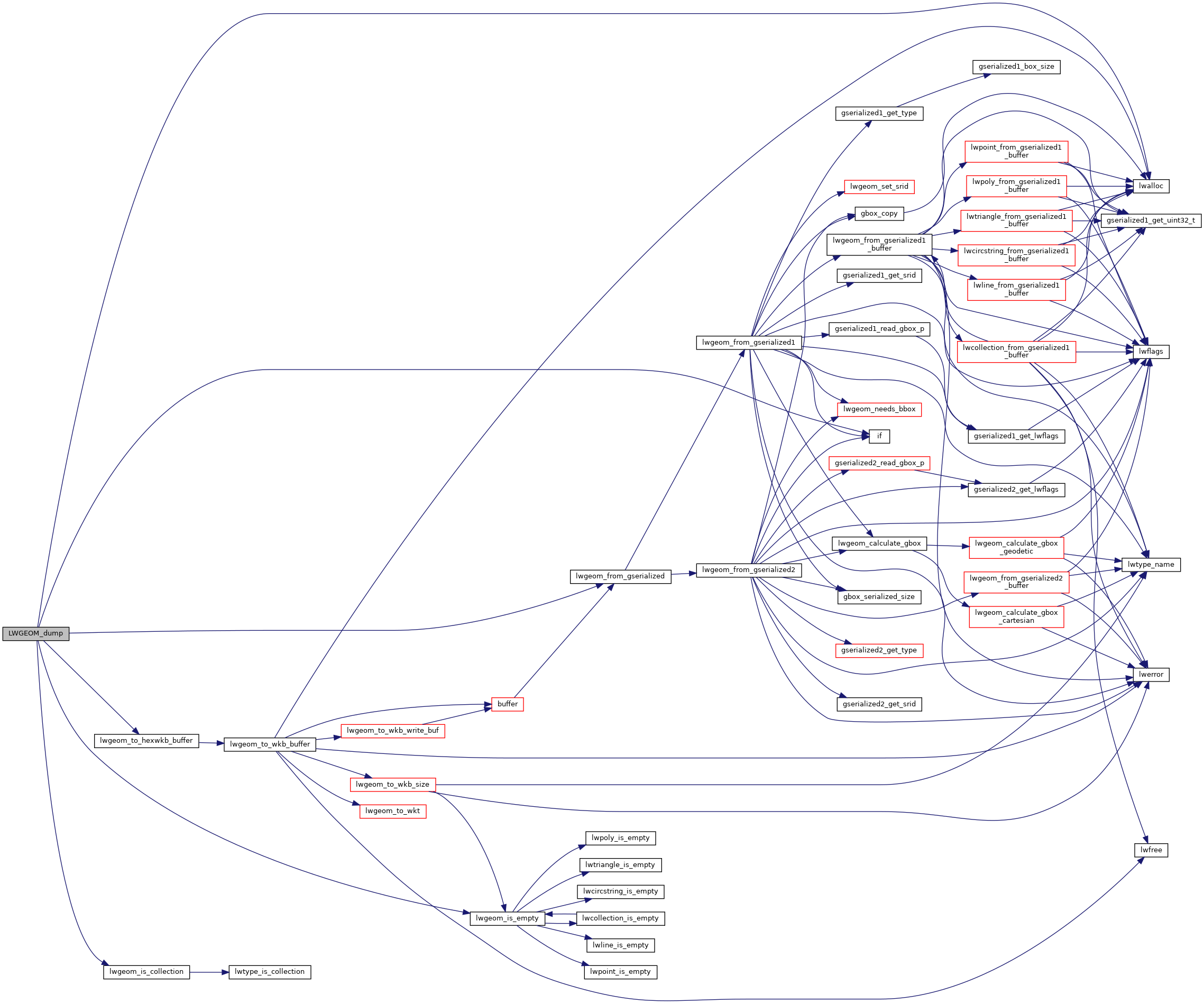◆ LWGEOM_dump()
| Datum LWGEOM_dump | ( | PG_FUNCTION_ARGS | ) |
Definition at line 70 of file lwgeom_dump.c.
LWGEOM * lwgeom_from_gserialized(const GSERIALIZED *g)
Allocate a new LWGEOM from a GSERIALIZED.
Definition: gserialized.c:268
char * lwgeom_to_hexwkb_buffer(const LWGEOM *geom, uint8_t variant)
Definition: lwout_wkb.c:845
int lwgeom_is_collection(const LWGEOM *lwgeom)
Determine whether a LWGEOM contains sub-geometries or not This basically just checks that the struct ...
Definition: lwgeom.c:1097
static int lwgeom_is_empty(const LWGEOM *geom)
Return true or false depending on whether a geometry is an "empty" geometry (no vertices members)
Definition: lwinline.h:199
Definition: lwgeom_dump.c:49
Definition: lwgeom_dump.c:57
Definition: liblwgeom.h:443
Definition: liblwgeom.h:573
Definition: liblwgeom.h:457
References GEOMDUMPNODE_T::geom, LWCOLLECTION::geoms, GEOMDUMPNODE_T::idx, if(), LAST, lwalloc(), lwgeom_from_gserialized(), lwgeom_is_collection(), lwgeom_is_empty(), lwgeom_to_hexwkb_buffer(), MAXDEPTH, LWCOLLECTION::ngeoms, POP, PUSH, result, GEOMDUMPSTATE::root, LWGEOM::srid, GEOMDUMPSTATE::stack, GEOMDUMPSTATE::stacklen, and WKB_EXTENDED.
Here is the call graph for this function:
